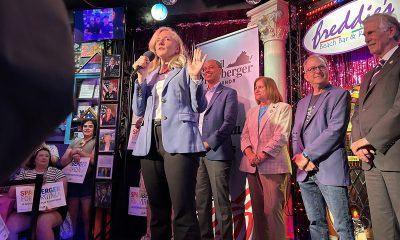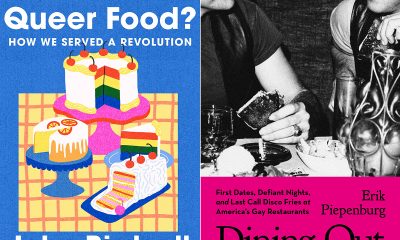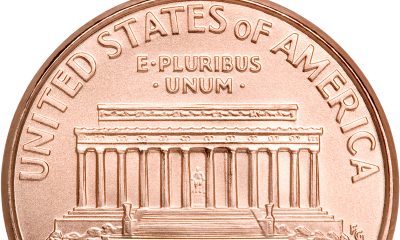Books
Despite the hype, Wenner memoir is a buzzkill
Reading this book is as exciting as perusing a spreadsheet
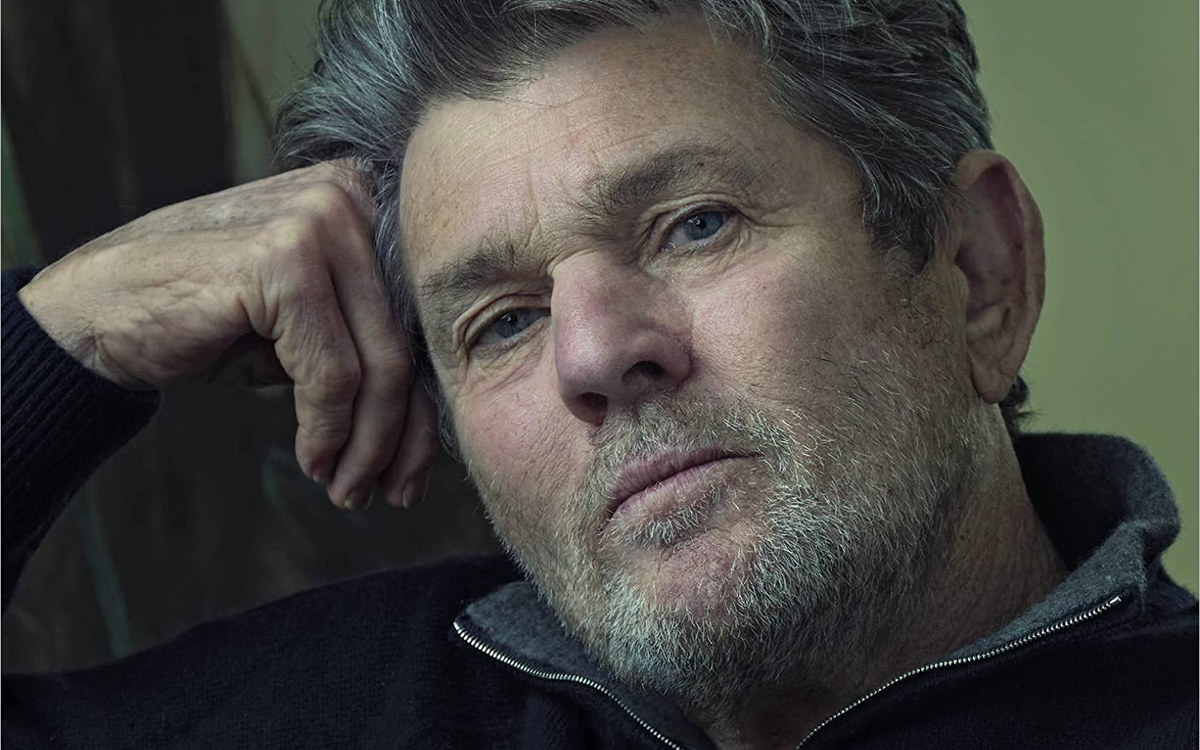
‘Like a Rolling Stone: A Memoir’
By Jann S. Wenner
c.2022, Little, Brown
$35/592 pages
“(I Can’t Get No) Satisfaction,” the Rolling Stones sang in 1965.
When reading “Like a Rolling Stone: A Memoir” by Jann S. Wenner, you may well find yourself singing along with the Stones.
Whether you’re a Boomer who grew up to the soundtrack of the rock ‘n’ roll, Woodstock generation (from the Grateful Dead to Jimi Hendrix to Bob Dylan to Joni Mitchell), a Gen-Xer who listened to punk rock, a millennial who voted for Barack Obama or a Gen-Zer who put Fleetwood Mac’s “Dreams” back on the charts, you’re likely curious about Wenner’s memoir.
In 1967, Wenner, 76, co-founded (with music critic Ralph J. Glisten) Rolling Stone, the magazine of youth culture and politics. Decades later, Wenner co-founded the Rock and Roll Hall of Fame.
Today, Wenner with his husband, designer Matt Nye and their three children, divides his time between Montauk, N.Y., Manhattan, and Sun Valley, Idaho. He and his ex-wife Jane are on amicable terms. Wenner and his former spouse have three sons.
Who other than Wenner, you’d think, digging into “Like a Rolling Stone,” would be better at taking us behind the scenes of the cultural history of more than half a century (from the late 1960s through the early 2020s)?
You’d expect, given the rock stars and politicians Wenner has known, worked with and interviewed (from Mick Jagger to John Lennon and Yoko Ono to Bob Dylan to Obama to acclaimed photographer Annie Leibovitz to Bill Clinton), that Wenner’s memoir would be brimming with dazzling anecdotes, wit, and insights.
Unfortunately, despite all of the hype and anticipation, “Like a Rolling Stone” is, by and large, a buzzkill.
Wenner, who grew up in San Francisco, has been associated with bold-faced names since he was a child. When he was hard to handle, Dr. Benjamin Spock stepped in to treat him.
His life was privileged from the get-go. His father was in the baby formula business and his mother was a novelist.
In boarding school, Wenner wrote a gossip column for the school paper and discovered (though he would be in a hetero marriage for decades) that he liked boys. He went on to college in Berkeley, Calif., during the height of the Free Speech movement. At 21, he was able to obtain the money he needed to start “Rolling Stone.”
Nearly every page of Wenner’s nearly 600-page memoir is infested with name-dropping. Celebs, tony nightspots and jet-setting locales appear more often than ants at a July 4th picnic.
But Wenner rarely reveals anything interesting about the famous names or his interactions with them.
Take Bruce Springsteen. What do we learn about the Boss from Wenner? That Springsteen at Wenner’s 60th birthday party sang, “Champagne, pot cookies and a Percocet/Keep him humming like a Sahre jet.”
Wenner’s name-dropping is a reminder that in 1986, Wenner with the Walt Disney Company bought Us Weekly, the celeb gossip magazine.
What’s most disappointing about the memoir is that Wenner says so little about what life has been like for him as a gay man.
It’s understandable that he, as a man of his generation, didn’t come out until the 1990s.
But, a fifth of the way into the 21st century, Wenner writes little about what it was like to be closeted for decades. Or how being closeted impacted Rolling Stone.
Wenner interviewed Bill Clinton extensively for Rolling Stone. Yet, he doesn’t reflect on DOMA or “Don’t Ask, Don’t Tell.”
Wenner wasn’t totally insensitive to what it means to be LGBTQ. One of his sons, Theo, talked to him about kids speaking of his “dad being gay.”
Wenner sent a condolence note to the parents of a Rolling Stones staffer and one of Andy Warhol’s lovers who died of AIDS. Rolling Stone published one of the first stories about AIDS.
But you can’t help wishing that “Like a Rolling Stone” had more of a queer quotient.
Thankfully, Wenner sometimes tells a revealing anecdote about a celeb. One day, he recalls, when he dined with John Lennon in a restaurant, a fan approached Lennon for an autograph. “Can’t you see I’m eating,” Lennon said to the fan, showing how annoying it was to have his privacy breached.
Yet, even with the glitz and glam, reading much of this memoir has the excitement of perusing a spreadsheet.
Wenner has done what neither God nor the Devil could do: he’s made his friend Bette Midler seem dull.
Wenner has led a fascinating life. His story is more interesting than anything a novelist, like his pal Tom Wolfe, could have imagined.
If only Carrie Fisher or Oscar Wilde had written his memoir.
The Blade may receive commissions from qualifying purchases made via this post.
Books
Two new books on dining out LGBTQ-style
Visit nightclubs, hamburger joints, and a bathhouse that feeds customers
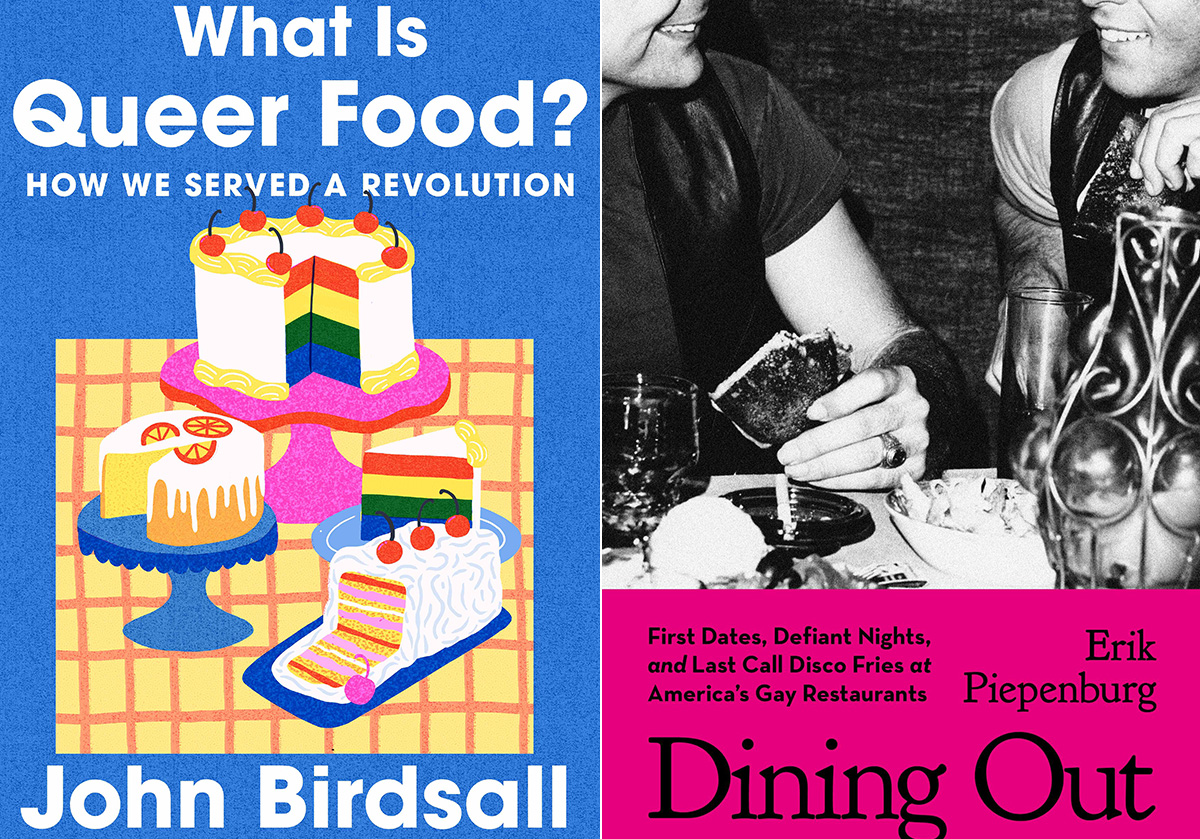
‘What is Queer Food? How We Served a Revolution’
By John Birdsall
c.2025, W.W. Norton
$29.99/304 pages
‘Dining Out: First Dates, Defiant Nights, and Last Call Disco Fries at America’s Gay Restaurants’
By Erik Piepenburg
c.2025, Grand Central
$30/352 pages
You thought a long time about who sits where.
Compatibility is key for a good dinner party, so place cards were the first consideration; you have at least one left-hander on your guest list, and you figured his comfort into your seating chart. You want the conversation to flow, which is music to your ears. And you did a good job but, as you’ll see with these two great books on dining LGBTQ-style, it’s sometimes not who sits where, but whose recipes were used.
When you first pick up “What is Queer Food?” by John Birdsall, you might miss the subtitle: “How We Served a Revolution.” It’s that second part that’s important.

Starting with a basic gay and lesbian history of America, Birdsall shows how influential and (in)famous 20th century queer folk set aside the cruelty and discrimination they received, in order to live their lives. They couldn’t speak about those things, he says, but they “sat down together” and they ate.
That suggested “a queer common purpose,” says Birdsall. “This is how who we are, dahling, This is how we feed our own. This is how we stay alive.”
Readers who love to cook, bake or entertain, collect cookbooks, or use a fork will want this book. Its stories are nicely served, they’re addicting, and they may send you in search of cookbooks you didn’t know existed.
Sometimes, though, you don’t want to be stuck in the kitchen, you want someone else to bring the grub. “Dining Out” by Erik Piepenburg is an often-nostalgic, lively look at LGBTQ-friendly places to grab a meal – both now and in the past.

In his introduction, Piepenburg admits that he’s a journalist, “not a historian or an academic,” which colors this book, but not negatively. Indeed, his journeys to “gay restaurants” – even his generous and wide-ranging definitions of the term – happily influence how he presents his narrative about eateries and other establishments that have fed protesters, nourished budding romances, and offered audacious inclusion.
Here, there are modern tales of drag lunches and lesbian-friendly automats that offered “cheap food” nearly a century ago. You’ll visit nightclubs, hamburger joints, and a bathhouse that feeds customers on holidays. Stepping back, you’ll read about AIDS activism at gay-friendly establishments, and mostly gay neighborhood watering holes. Go underground at a basement bar; keep tripping and meet proprietors, managers, customers and performers. Then take a peek into the future, as Piepenburg sees it.
The locales profiled in “Dining Out” may surprise you because of where they can be found; some of the hot-spots practically beg for a road trip.
After reading this book, you’ll feel welcome at any of them.
If these books don’t shed enough light on queer food, then head to your favorite bookstore or library and ask for help finding more. The booksellers and librarians there will put cookbooks and history books directly in your hands, and they’ll help you find more on the history and culture of the food you eat. Grab them and you’ll agree, they’re pretty tasty reads.
The Blade may receive commissions from qualifying purchases made via this post.
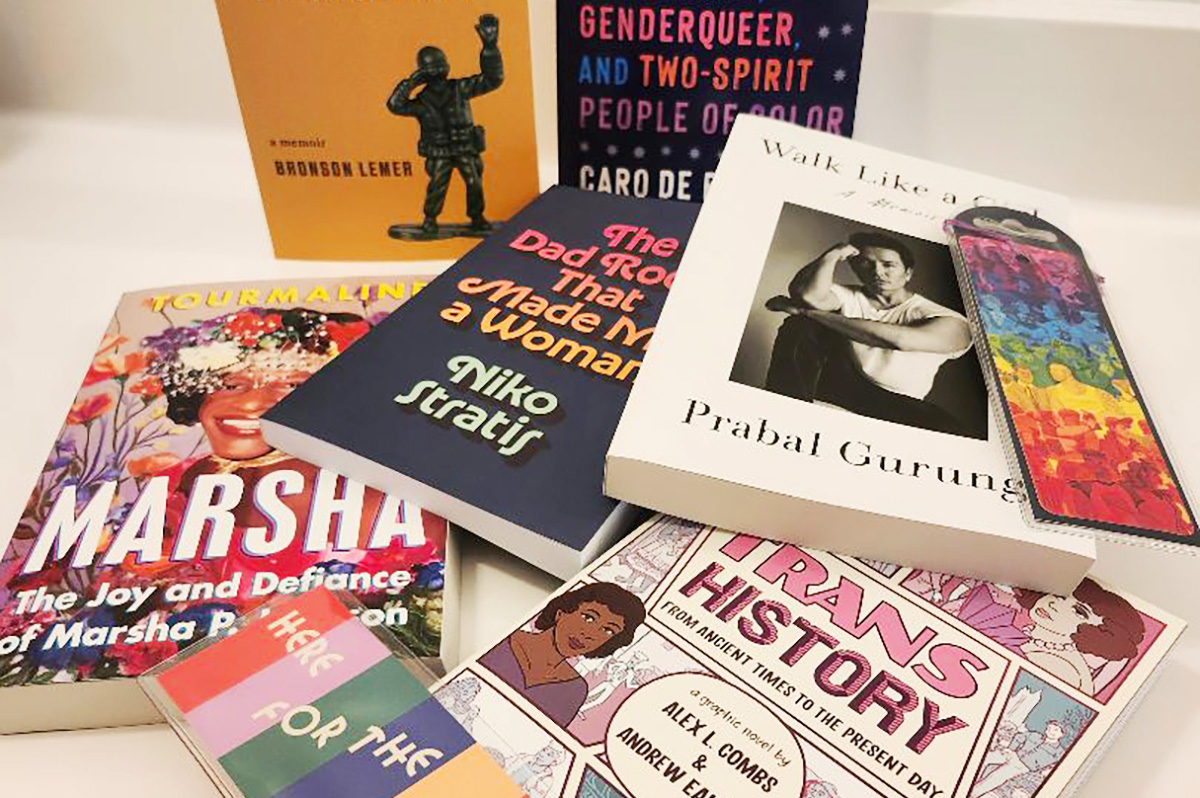
You’re going to be on your feet a lot this month.
Marching in parades, dancing in the streets, standing up for people in your community. But you’re also likely to have some time to rest and reflect – and with these great new books, to read.
First, dip into a biography with “Marsha: The Joy and Defiance of Marsha P. Johnson” by Tourmaline (Tiny Rep Books, $30), a nice look at an icon who, rumor has it, threw the brick that started a revolution. It’s a lively tale about Marsha P. Johnson, her life, her activism before Stonewall and afterward. Reading this interesting and highly researched history is a great way to spend some time during Pride month.
For the reader who can’t live without music, try “The Dad Rock That Made Me a Woman” by Niko Stratis (University of Texas Press, $27.95), the story of being trans, searching for your place in the world, and finding it in a certain comfortable genre of music. Also look for “The Lonely Veteran’s Guide to Companionship” by Bronson Lemer (University of Wisconsin Press, $19.95), a collection of essays that make up a memoir of this and that, of being queer, basic training, teaching overseas, influential books, and life.
If you still have room for one more memoir, try “Walk Like a Girl” by Prabal Gurung (Viking, $32.00). It’s the story of one queer boy’s childhood in India and Nepal, and the intolerance he experienced as a child, which caused him to dream of New York and the life he imagined there. As you can imagine, dreams and reality collided but nonetheless, Gurung stayed, persevered, and eventually became an award-winning fashion designer, highly sought by fashion icons and lovers of haute couture. This is an inspiring tale that you shouldn’t miss.
No Pride celebration is complete without a history book or two.
In “Trans History: From Ancient Times to the Present Day” by Alex L. Combs & Andrew Eakett ($24.99, Candlewick Press), you’ll see that being trans is something that’s as old as humanity. One nice part about this book: it’s in graphic novel form, so it’s lighter to read but still informative. Lastly, try “So Many Stars: An Oral History of Trans, Nonbinary, Genderqueer, and Two-Spirit People of Color” by Caro De Robertis (Algonquin Books of Chapel Hill. $32.00) a collection of thoughts, observations, and truths from over a dozen people who share their stories. As an “oral history,” you’ll be glad to know that each page is full of mini-segments you can dip into anywhere, read from cover to cover, double-back and read again. It’s that kind of book.
And if these six books aren’t enough, if they don’t quite fit what you crave now, be sure to ask your favorite bookseller or librarian for help. There are literally tens of thousands of books that are perfect for Pride month and beyond. They’ll be able to determine what you’re looking for, and they’ll put it directly in your hands. So stand up. March. And then sit and read.
a&e features
James Baldwin bio shows how much of his life is revealed in his work
‘A Love Story’ is first major book on acclaimed author’s life in 30 years
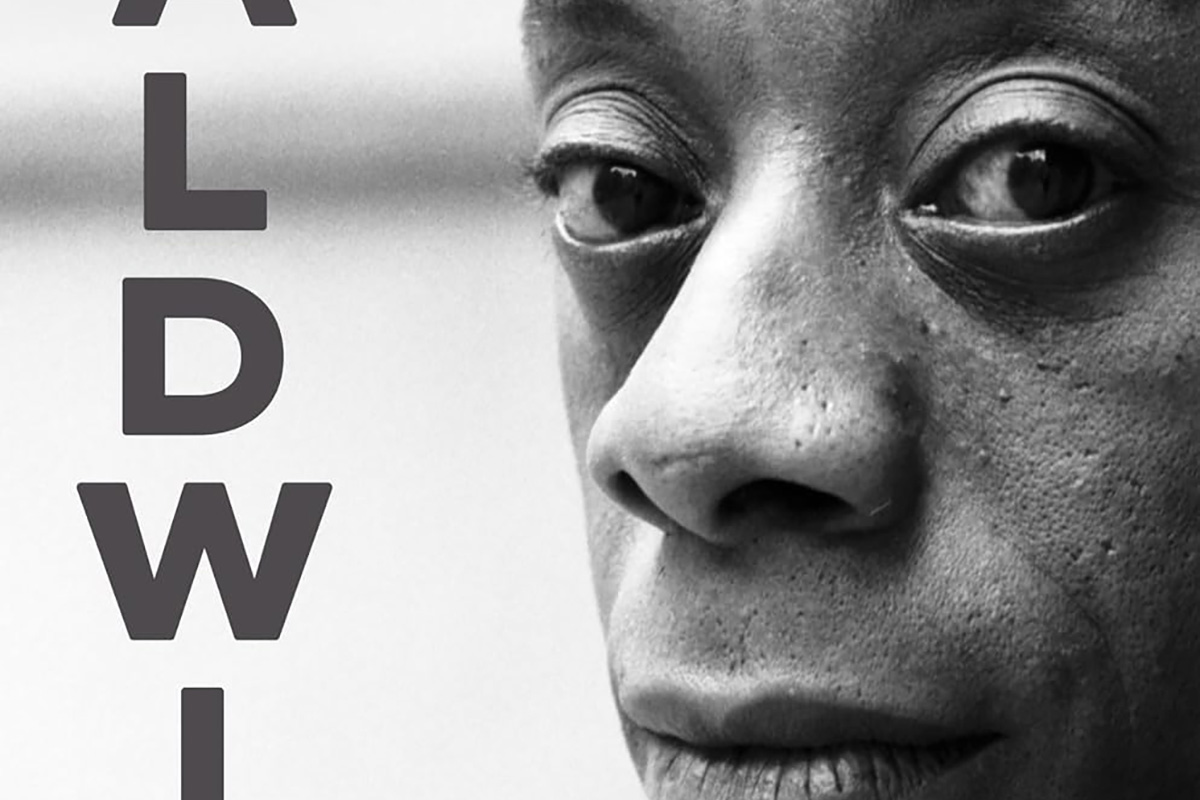
‘Baldwin: A Love Story’
By Nicholas Boggs
c.2025, FSG
$35/704 pages
“Baldwin: A Love Story” is a sympathetic biography, the first major one in 30 years, of acclaimed Black gay writer James Baldwin. Drawing on Baldwin’s fiction, essays, and letters, Nicolas Boggs, a white writer who rediscovered and co-edited a new edition of a long-lost Baldwin book, explores Baldwin’s life and work through focusing on his lovers, mentors, and inspirations.
The book begins with a quick look at Baldwin’s childhood in Harlem, and his difficult relationship with his religious, angry stepfather. Baldwin’s experience with Orilla Miller, a white teacher who encouraged the boy’s writing and took him to plays and movies, even against his father’s wishes, helped shape his life and tempered his feelings toward white people. When Baldwin later joined a church and became a child preacher, though, he felt conflicted between academic success and religious demands, even denouncing Miller at one point. In a fascinating late essay, Baldwin also described his teenage sexual relationship with a mobster, who showed him off in public.
Baldwin’s romantic life was complicated, as he preferred men who were not outwardly gay. Indeed, many would marry women and have children while also involved with Baldwin. Still, they would often remain friends and enabled Baldwin’s work. Lucien Happersberger, who met Baldwin while both were living in Paris, sent him to a Swiss village, where he wrote his first novel, “Go Tell It on the Mountain,” as well as an essay, “Stranger in the Village,” about the oddness of being the first Black person many villagers had ever seen. Baldwin met Turkish actor Engin Cezzar in New York at the Actors’ Studio; Baldwin later spent time in Istanbul with Cezzar and his wife, finishing “Another Country” and directing a controversial play about Turkish prisoners that depicted sexuality and gender.
Baldwin collaborated with French artist Yoran Cazac on a children’s book, which later vanished. Boggs writes of his excitement about coming across this book while a student at Yale and how he later interviewed Cazac and his wife while also republishing the book. Baldwin also had many tumultuous sexual relationships with young men whom he tried to mentor and shape, most of which led to drama and despair.
The book carefully examines Baldwin’s development as a writer. “Go Tell It on the Mountain” draws heavily on his early life, giving subtle signs of the main character John’s sexuality, while “Giovanni’s Room” bravely and openly shows a homosexual relationship, highly controversial at the time. “If Beale Street Could Talk” features a woman as its main character and narrator, the first time Baldwin wrote fully through a woman’s perspective. His essays feel deeply personal, even if they do not reveal everything; Lucian is the unnamed visiting friend in one who the police briefly detained along with Baldwin. He found New York too distracting to write, spending his time there with friends and family or on business. He was close friends with modernist painter Beauford Delaney, also gay, who helped Baldwin see that a Black man could thrive as an artist. Delaney would later move to France, staying near Baldwin’s home.
An epilogue has Boggs writing about encountering Baldwin’s work as one of the few white students in a majority-Black school. It helpfully reminds us that Baldwin connects to all who feel different, no matter their race, sexuality, gender, or class. A well-written, easy-flowing biography, with many excerpts from Baldwin’s writing, it shows how much of his life is revealed in his work. Let’s hope it encourages reading the work, either again or for the first time.

















